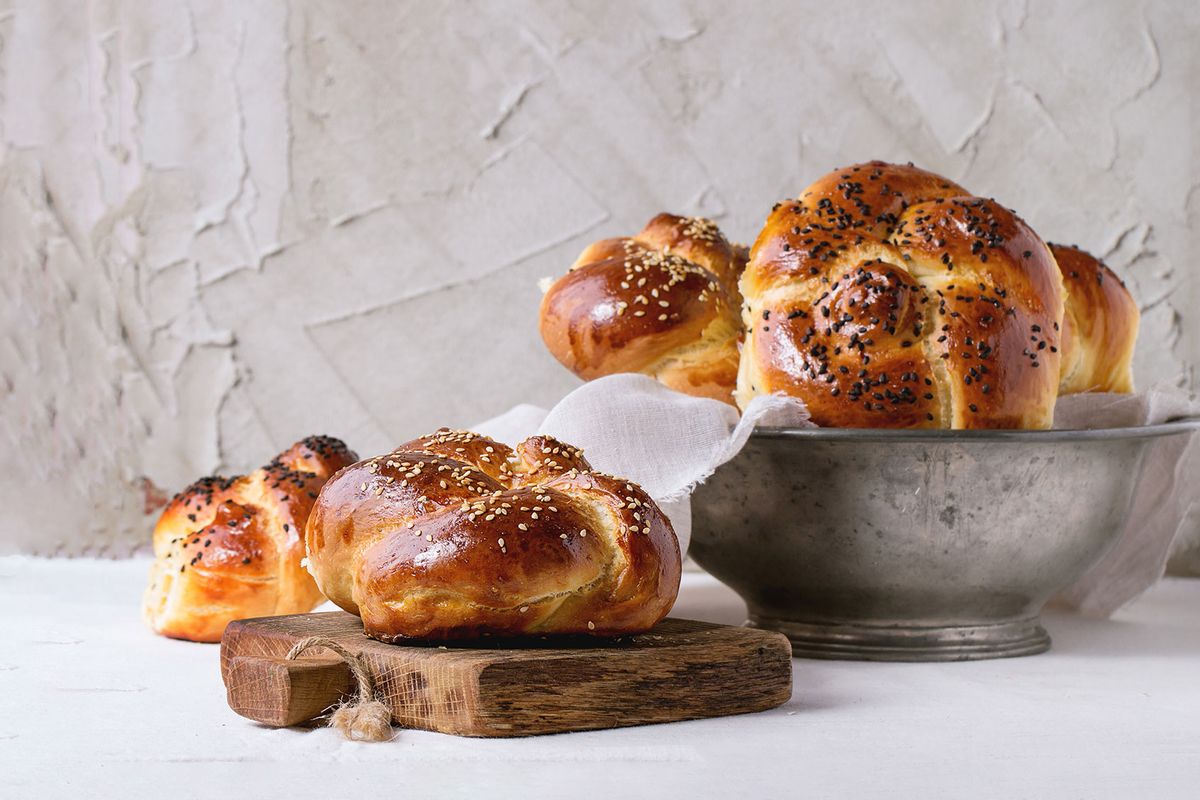Making (and braiding) the perfect challah has never been easier

Born and raised in Tel Aviv, chef Tom Aviv became a household name in Israel after winning “MasterChef Israel” in 2016, despite having no formal culinary training. He went on to open multiple restaurants in Israel and Morocco: Coco Bambino, which blended Italian and Israeli flavors; Fat Cow, an award-winning burger spot; the meat-centered Trigger & Tom Butchery; and Milk & Honey, an all-day casual eatery recognized for modern top-tier halal cuisine (and it is the first restaurant owned by an Israeli chef to be opened in Casablanca).
Then, earlier this year, Aviv came stateside and opened Branja, a retro Miami restaurant that’s inspired by Tel Aviv in the 70s.
Through his career, Aviv has become known for blending big, ostentatious flavors with far-reaching global inspiration — but that’s not to say that he has forgotten the classics. In anticipation of Rosh Hashanah, Aviv spoke with Salon Food about how to make and braid the perfect challah. Here are his tips.
Salon Food: What are some of the most common mistakes you think people make when baking challah?
Tom Aviv: The saying “baking is a science” very much applies to making challah. The biggest, and most common, mistake that can ruin your challah is not following the recipe exactly. Don’t guess or change the amount of each ingredient, as this can cause flat bread, bread that is too dense and other issues.
Additionally, make sure you follow the recipe in order. If you put the salt and yeast in at the same time it will prevent the yeast from working and the bread will not rise. The yeast should be added last, after all of the dry ingredients.
A crucial mistake that is often made is not passing the flour through a sieve before using it. If you don’t sift the flour, the result is bread that is too dense and heavy. Sifting is what gives challah its soft, airy texture.
It may be tempting to frequently check on your challah in the oven to see how it’s cooking, but this is a mistake. Opening the oven makes the temperature go down, and causes the challah to flatten, so only take a peek when necessary.
If you’re having a large gathering and making large quantities of challah, don’t try to cook multiple loaves at once. This prevents the heat from spreading evenly throughout the bread.
Challah really involves just a few simple ingredients. Do you have any tips for choosing the best ingredients for the bread?
When it comes to flour, there’s a lot of fancy options, but the best for challah is just regular, white flour. Challah is a comfort food, so don’t try to “healthy it up” with wheat flour, it will just make the bread too dense.
Personally, I like to add honey to my challah in addition to sugar. It plays up the sweetness while giving it a unique taste. Mixing honey and water and brushing it on top of challah dough before baking can also give the bread a nice, sweet crust
When it comes to fat, I always use oil and not butter. I find that butter makes challah feel more like a brioche and a bit too soggy.
Contrary to popular belief, challah can be vegan! In place of eggs, just add a little more oil and water.
Do you have any tips for home bakers who may be intimidated by braiding challah?
The most intimidating part of making challah is creating the right consistency of the dough. There are a few simple tricks that can help you achieve perfect dough every time:
The elements can impact your challah ingredients, especially the flour. The flour’s consistency can change day to day depending on the humidity and temperature of where it is stored. The best way to get a perfect dough consistency is to add in a little bit of water at a time, instead of all at once, until you get a dough that is firm and not too sticky.
And when it comes to challah dough, more mixing is better. Don’t just mix for five minutes. Ten, even 15, minutes in the mixer can help you achieve perfect dough.
There is a traditional challah shape, but if you’re intimidated by the braiding, you can skip this step. Challah can be whatever shape you want — and a simple bun shape will taste just as delicious.
Read more
from Salon Food

